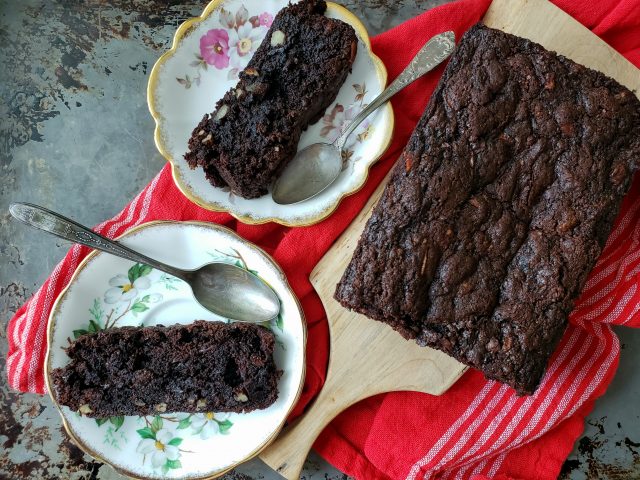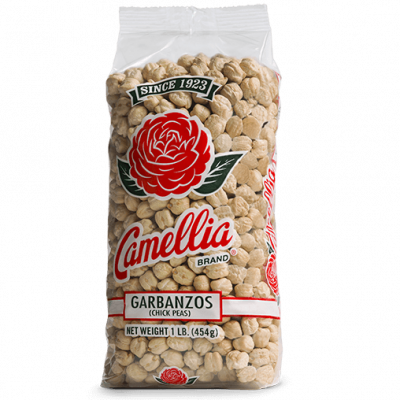Aquafaba: How to Make It and What To Do With It
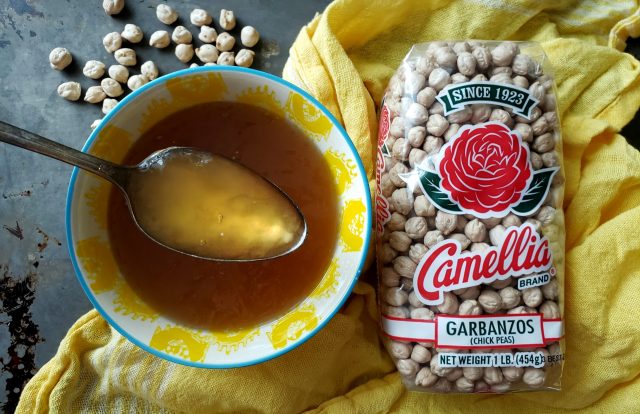
When you boil beans in water, the liquid left when the beans are removed is aquafaba.
What is Aquafaba?
When experimenting in the kitchen – whether out of necessity or curiosity – it’s always fascinating to discover new replacement ingredients. Applesauce and mashed bananas can be a low-fat stand-in for butter when baking your favorite muffins. Greek yogurt can take the place of sour cream (or vice-versa), and honey is a golden substitute for white sugar. But perhaps the most unexpected replacement ingredient is aquafaba. It’s simply the liquid left behind after cooking garbanzo beans (aka chickpeas). It whips up into the fluffiest, most perfect meringue you’ve ever seen this side of an egg white.
That’s right – the thick, slightly murky water you cooked your garbanzo beans in last time you made hummus (or the last time you cooked any beans from scratch) is actually a highly successful egg replacement – particularly for egg whites – allowing you to make perfectly light and fluffy macarons, lemon meringue pie, mousse, homemade ice cream, marshmallow cream, frostings and even frothy cocktails, all without egg whites. You can also use aquafaba to make egg-free mayonnaise, flavored aiolis, meatloaf and so much more.
Aquafaba isn’t just for vegans – it’s deliciously economical for everyone.
Even if you’re not interested in giving up eggs, it’s fun to save money with aquafaba! Keep your egg stash for omelets and use the bean-water that you’d normally toss down the drain to create your favorite baked goods, desserts and more. A combination of the Latin word for water (“aqua”) and bean (“faba”), aquafaba went viral in 2015 thanks to the tinkering of Goose Wohlt, a systems engineer from Indiana. While trying to create a vegan meringue, Wohlt ditched the stringy vegan egg replacement he’d bought at the store and tried whipping up bean liquid instead. A wizard-like moment quickly unfolded in perfectly stiff peaks: “Moments later, out of this goopy product, a pillowy, dense foam arose, exactly like you might expect from egg whites,” writes Wohlt in the introduction to Aquafaba: Sweet and Savory Vegan Recipes Made Egg-Free with the Magic of Bean Water.
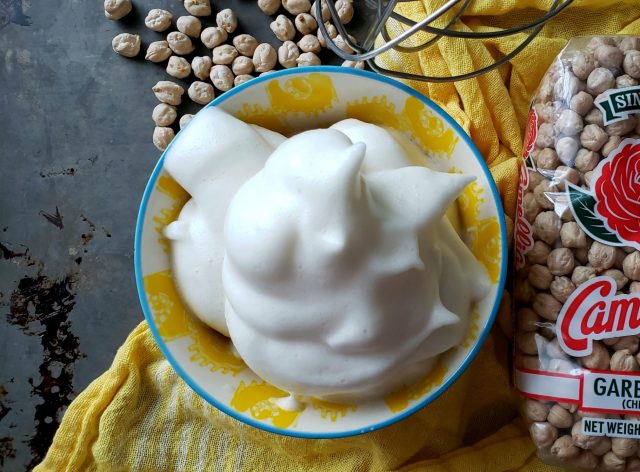
Is that an egg-white meringue? No, it’s whipped aquafaba, made with Camellia Brand Garbanzos (aka Chickpeas)!
It’s goopy. It’s thick. It makes the perfect meringue.
The meringues made with aquafaba were practically identical to those made with egg whites – and head and shoulders above those made with commercially available vegan egg replacements. Wohlt shared his story on Facebook with a vegan baking group, and the rest is legume-water history. Home kitchen trial-and-error with aquafaba took off across social media for vegans, those with egg or dairy allergies and anyone curious about the culinary properties that makes something so improbable, work so well.
Five years later, there’s still not a great understanding of why aquafaba is so effective as an egg-white substitute. A study launched in 2018 by the National Institute for Health notes that, “The solution has recently been shown to produce stable foams and emulsions, and can act as a thickener [but] as aquafaba is both new and being developed by an Internet-based community little is known of its composition or properties.”
Aquafaba lovers share their tips and tricks.
One thing’s for sure, though: the grassroots efforts of online aquafaba lovers have led to plenty of best practices, tips and tricks. For starters, the viscosity (read: thickness or stickiness) of aquafaba from cooked, dried garbanzo beans is far higher and more consistent than that of the aquafaba from a can of beans, meaning that a little bit of extra time spent soaking and cooking down dried beans will mean a world of difference in your final, aquafaba-based recipes. What’s more, canned beans often have plenty of preservatives added in, like sodium, which renders the aquafaba less healthy. And if you’re looking to go extra nutrient-rich with your aquafaba, using dried beans allows for the addition of a type of Japanese seaweed called Kombu, which has been proven to help the bean liquid properly set up while adding additional magnesium to the final product – a real win-win.
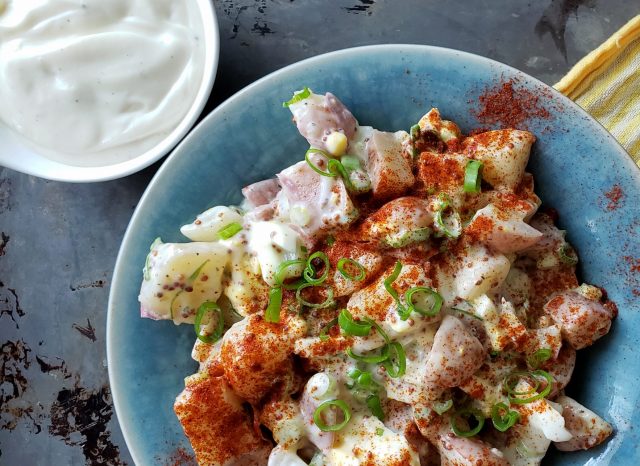
Aquafaba can be used to make a creamy, egg-free mayonnaise, perfect for potato salad.
Aquafaba basics – plus our very own recipes.
Aquafaba can technically refer to the liquid from any kind of cooked beans – black beans, lima beans, you name it – but beginners usually stick with the more neutral flavor and lighter color of garbanzo bean water. When cooking the dried garbanzos, a general ratio of bean-to-water is two cups of beans and six cups of water, which will typically yield about 2 to 2 1/2 cups of aquafaba. The liquid will store in the fridge for up to a week (and freeze for up to a month), but keep in mind that the chemical properties of aquafaba mean it’s very susceptible to oil – which will break it down and render it useless – so using an oil-free, squeaky-clean stainless steel bowl or mason jar is the best bet for storage.
After separating out your aquafaba, it’s time for the fun part: putting it to the test. There will certainly be plenty of “learning curve” moments along the way with such a novel product, but whether whipping it up into fluffy cookies with a little help from cream of tartar and sugar, or watching it emulsify into creamy mayonnaise and salad dressings, your kitchen will soon start to feel like a science laboratory. “There is no denying that aquafaba is a revolutionary discovery,” writes Zsu Denver in her book, Aquafaba: Sweet and Savory Vegan Recipes. “This must be what Jack was talking about when he bought those magic beans; it has just taken us some time to uncover this truly magical application of the humble legume.”
Magic beans? Try our recipes for yourself:
Traditional Chickpea (Garbanzo) Aquafaba

Potato Salad with Chickpea Aquafaba Mayo
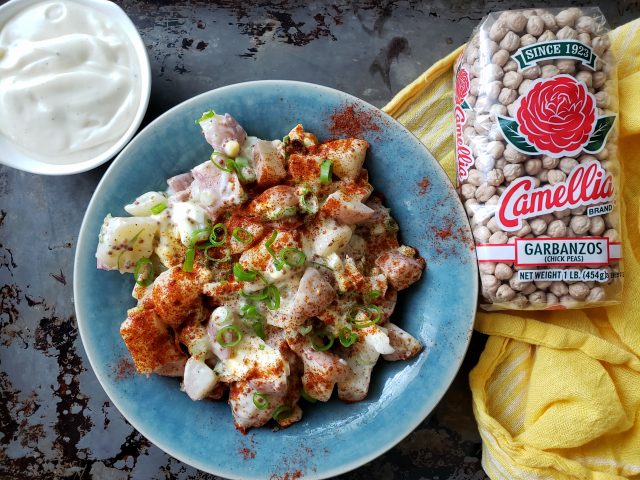
Any Bean Aquafaba
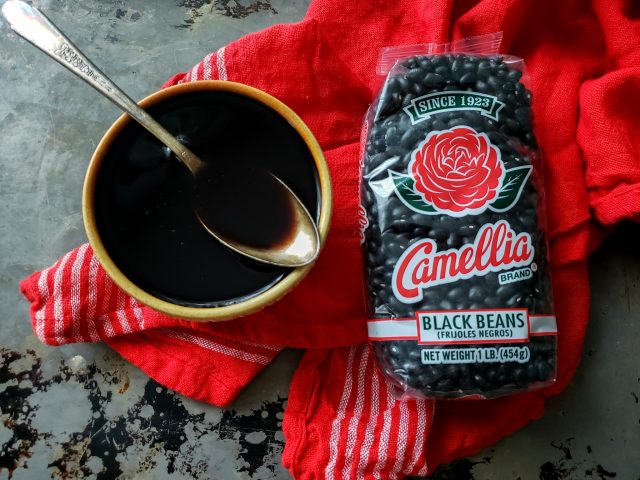
Chocolate Zucchini Bread with Black Bean Aquafaba
